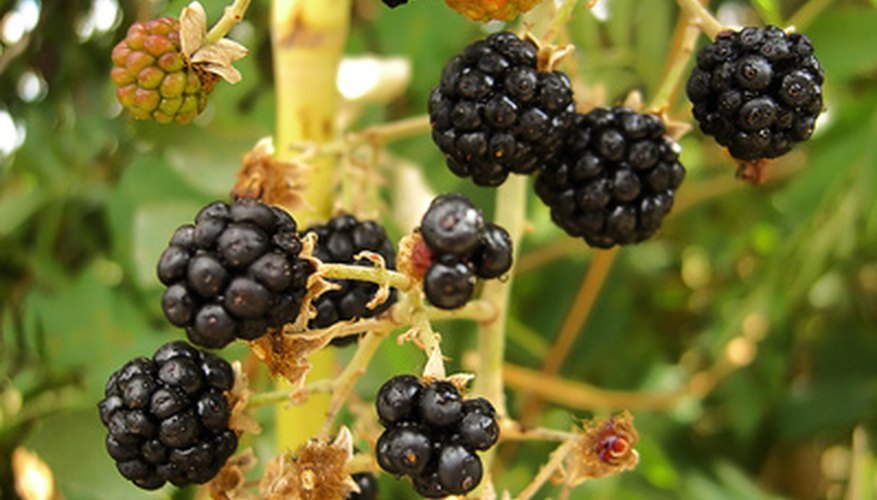The mulberry tree thrives in Asia, Europe and the Middle East. Its berries are edible, it's supple wood is good for carving and its bark and leaves are used to make paper. So prominent are the uses and attributes of the mulberry tree that, in all of these places, this plant became wrapped in legends, history and meaning.
Attributes
Mulberries do not bud until all danger of frost is past, and so they symbolise calculated patience. When they do produce buds, it happens so quickly that it seems to occur overnight, displaying and thus symbolising expediency and wisdom. For all these attributes, the ancient Greeks dedicated the plant to the goddess of wisdom, Athena (a.k.a. the Roman goddess Minerva).
- Mulberries do not bud until all danger of frost is past, and so they symbolise calculated patience.
Greek Symolism
The mulberry tree is featured in the works of Ovid and in Shakespeare's "A Midsummer Night's Dream" in the tale of Pyramus and Thisbe. These two young lovers were forbidden to wed, so they arranged to meet secretly under a mulberry tree. They both perished under the tree, and their blood is said to have stained the white berries dark red. To this day, the red berries of the mulberry tree carry the symbolism of star-crossed lovers and of the final union of death.
- The mulberry tree is featured in the works of Ovid and in Shakespeare's "A Midsummer Night's Dream" in the tale of Pyramus and Thisbe.
- They both perished under the tree, and their blood is said to have stained the white berries dark red.
Chinese Symbolism
The sun in Chinese legend is represented by the three-legged Sun Bird. This bird resides in the eastern sea, atop a magnificent mulberry tree. This tree is said to be the link between earth and the eastern heaven. Depictions of mulberry trees in art are often symbols of this divine tree. The mulberry is also a symbol of the archer, because legend tells how the first bow was made by Emperor Huang di to defeat a tiger who had chased him into a mulberry tree.
- The sun in Chinese legend is represented by the three-legged Sun Bird.
Japanese Symbolism
Mulberry paper is used as vessels for offerings in Shinto shrines. Japanese families often used mulberries as a part of their family crests, and strips of the fibre were hung from sacred trees as prayers. The mulberry leaves were also used to feed silk worms, who produced the fibre to make kimonos fit for the ruling class. In all of these capacities, the mulberry represents support, nurturing and self-sacrifice.
- Mulberry paper is used as vessels for offerings in Shinto shrines.
- The mulberry leaves were also used to feed silk worms, who produced the fibre to make kimonos fit for the ruling class.
History
The well-renowned author of "Paradise Lost," John Milton, was said to have planted a mulberry tree at Cambridge and at Stowmarket, and these trees thrive to this day. Shakespeare planted a tree at Stratford-on-Avon, which supposedly came from the mulberry garden of James I. Though this tree was chopped down, a few cuttings of it were transplanted at various spots around England, and the wood from this tree was fashioned into countless mementos of the poet and playwright. These mulberry trees are now symbolic of those famous British writers.
- The well-renowned author of "Paradise Lost," John Milton, was said to have planted a mulberry tree at Cambridge and at Stowmarket, and these trees thrive to this day.
